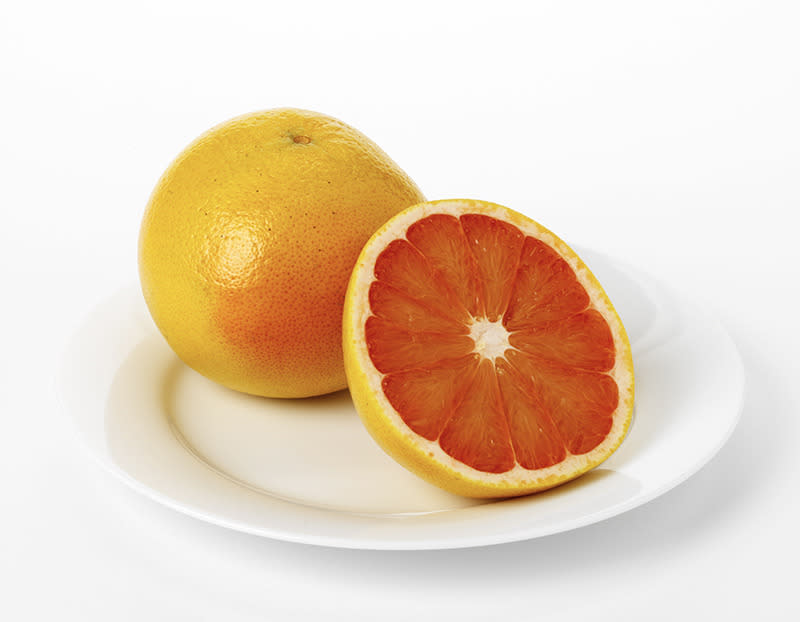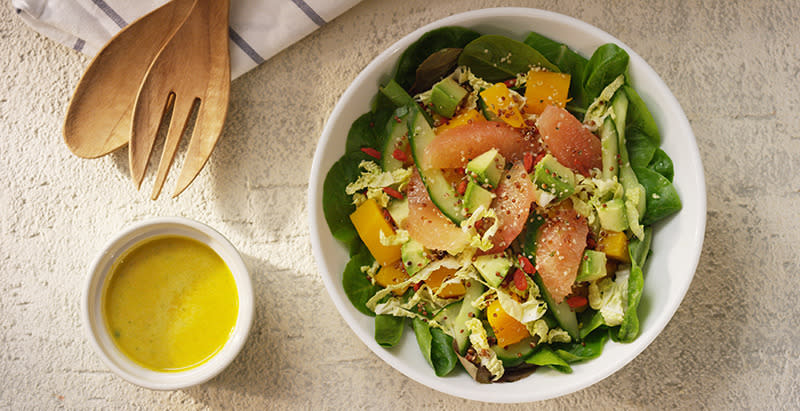How to enjoy grapefruit safely

(photo credit: Florida Department of Citrus)
Grapefruit are in their peak season during winter, making it a welcome dose of juicy sunshine in the bleakest time of year. But did you know that consuming grapefruit could be dangerous to your health when combined with certain medications?
According to Health Canada, “there are substances in grapefruit that can interfere with the way your body absorbs and breaks down (metabolizes) certain drugs.” These substances can cause your body to absorb too much medication into your bloodstream, or alter the effectiveness of the drug, which can have life-threatening effects such as respiratory depression or gastrointestinal bleeding.
The substance is present in all forms of grapefruit, whether it’s the whole fruit or juice, fresh or frozen. Just one grapefruit or 250ml of juice can create a negative interaction with medication, and this effect can last in your body for three days or more.
While the effects of these substances vary depending on the person, drug and amount of grapefruit consumed, the general rule is to avoid consuming grapefruit entirely if you are on certain medications.
Which medications interact with grapefruit?
An article from the Canadian Medical Association Journal says, “more than 85 drugs, most of which are available in Canada, are known or predicted to interact with grapefruit.” These medications are all taken orally, and are commonly prescribed for a variety of conditions. Mayo Clinic lists the following as examples of medications that can interact with grapefruit:
Drugs that fight infections, such as erythromycin
Drugs that reduce cholesterol, such as atorvastatin (Lipitor) and lovastatin (Altoprev)
Drugs that treat high blood pressure, such as felodipine, carvedilol (Coreg)
Drugs that treat heart problems, such as amiodarone (Coradarone, Pacerone)
Drugs that treat depression, such as diazepam (Valium, Diastat) and fluvoxamine
Drugs that prevent organ rejection in transplant recipients, such as cyclosporine (Sandimmune, Neoral, others), tacrolimus (Prograf, Astagraf)
If you are taking any oral medications, it’s important to find out if you can safely include grapefruit in your diet. While your medication should have a warning label on the packaging, it’s best to check with your doctor and pharmacist to be sure.
It’s not just grapefruit that can interact with medications
There are other citrus fruits that can have negative interactions with medications, too. Tangelo fruits, a hybrid of tangerines and grapefruit, are an obvious risk, however so are Seville oranges (used in marmalade) and pomelos (a large grapefruit-like fruit).
Additionally, citrus-flavoured products can contain grapefruit extract or grapefruit juice, but may not say so on the packaging.
Don’t avoid eating grapefruit unless you have to
If you are not taking any medications that interact with grapefruit, and have no other dietary restrictions (like a low-potassium diet), there is no reason to avoid eating this delicious winter fruit.
Grapefruit is one of the most nutrient-dense fruits per calorie, with high amounts of Vitamin C and Vitamin A. In fact, just half of a grapefruit contains 100 per cent of your recommended daily intake of Vitamin C. The sweet and tangy citrus fruit also contains folate, potassium, fiber and calcium.
If you’re looking for a new way to enjoy grapefruit, try making this nutritious salad from Chef Cory Vitiello.

(photo credit: Barry Cheong)
Florida Grapefruit Super Salad
Salad
1 butternut squash
1 cup organic red quinoa
2 Florida grapefruit
½ small Napa Cabbage
2 cups baby romaine leaves
1 cucumber
½ cup goji berries
½ cup hemp hearts
¼ avocado
Dressing
1 small carrot
2 green onions
2 tablespoons White Miso
100 mL fresh Florida grapefruit juice
1 inch piece of peeled ginger
1 tablespoon lemon juice
1 teaspoon salt
75 mL olive oil
75 mL canola oil
Peel and cut the butternut squash into 1 inch pieces. Blanch in boiling water for about 4 minutes or until just tender. Drain, pat dry and set it aside until ready to use.
In a small pot, bring 2 cups of lightly salted water to boil. Add the quinoa and turn heat down to medium. Cook the quinoa for 20 minutes or until the quinoa triples in size and becomes tender. Drain and set aside to cool.
Combine all of the dressing ingredients in a blender and puree on the highest speed for several minutes until very smooth. This can be done a day in advance and held in the refrigerator.
Using a sharp paring knife, cut the ends off of the Florida grapefruit so it sits flat on the cutting board. Carefully run the paring knife under the peel and trim away all of the pith, leaving just the grapefruit flesh. Slice the grapefruit into 8 even segments
Cut the Napa Cabbage into quarters and remove the core. Cut the cabbage crosswise into thin shavings. Hold this in a large salad bowl suitable for serving.
Cut the baby romaine leaves into bite sized pieces and add them to the salad bowl.
Slice the cucumber lengthwise and remove the seeds. Cut the cucumber on an angle into very thin slices and transfer to the salad bowl.
Combine the squash, Florida grapefruit slices, hemp hearts, goji berries, avocado and quinoa into the salad bowl and toss liberally with dressing.
(recipe credit: Chef Cory Vitiello for the Florida Department of Citrus)

